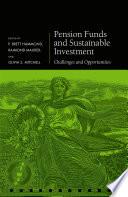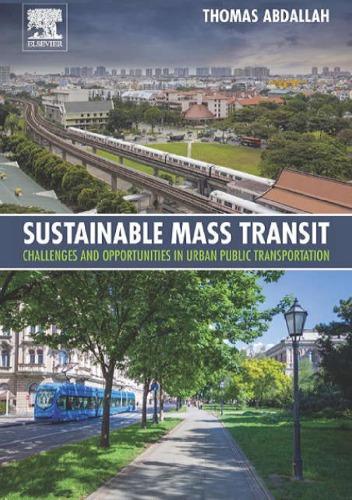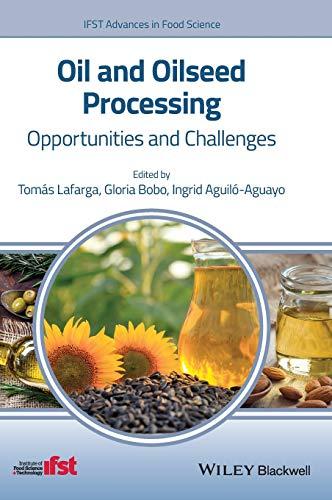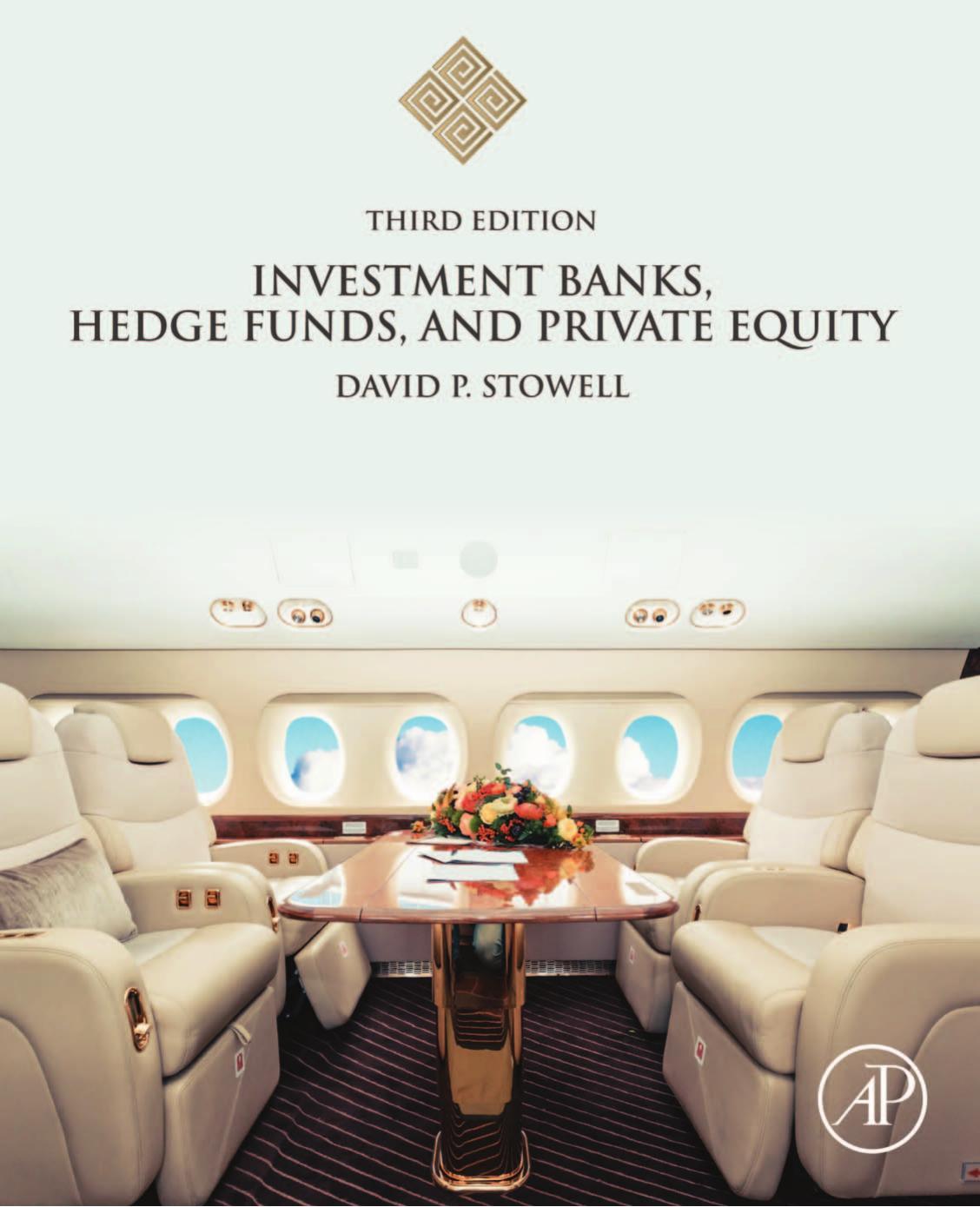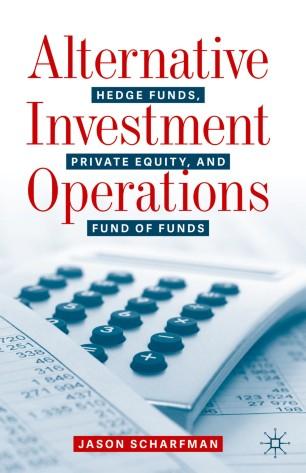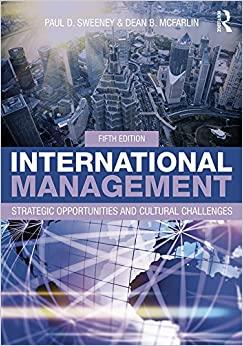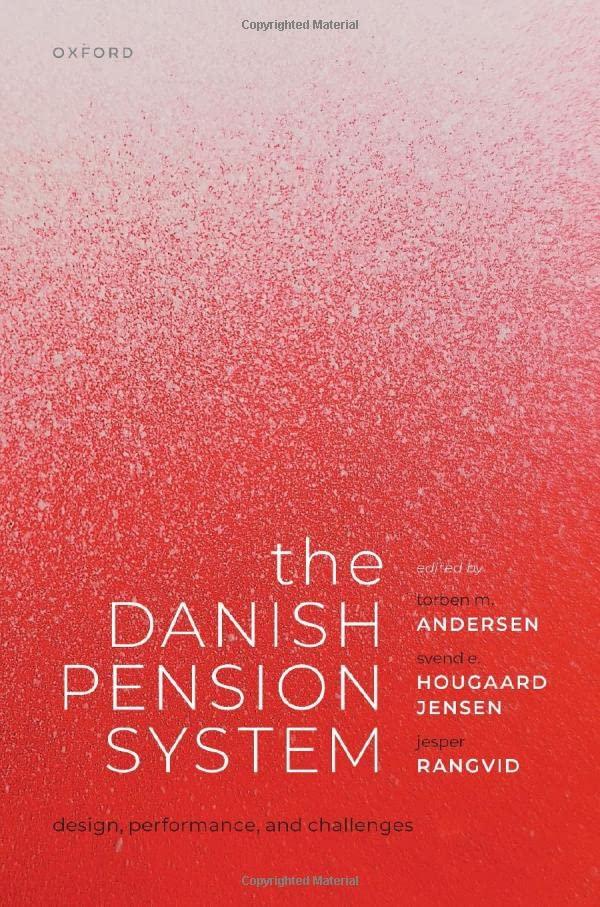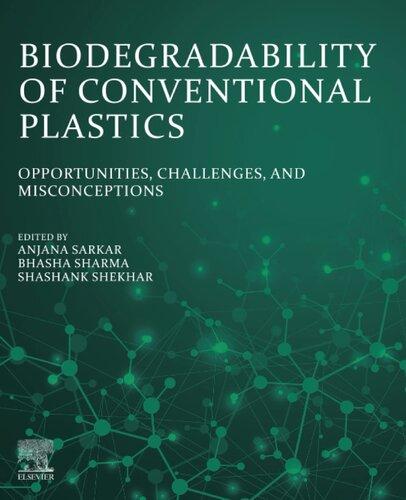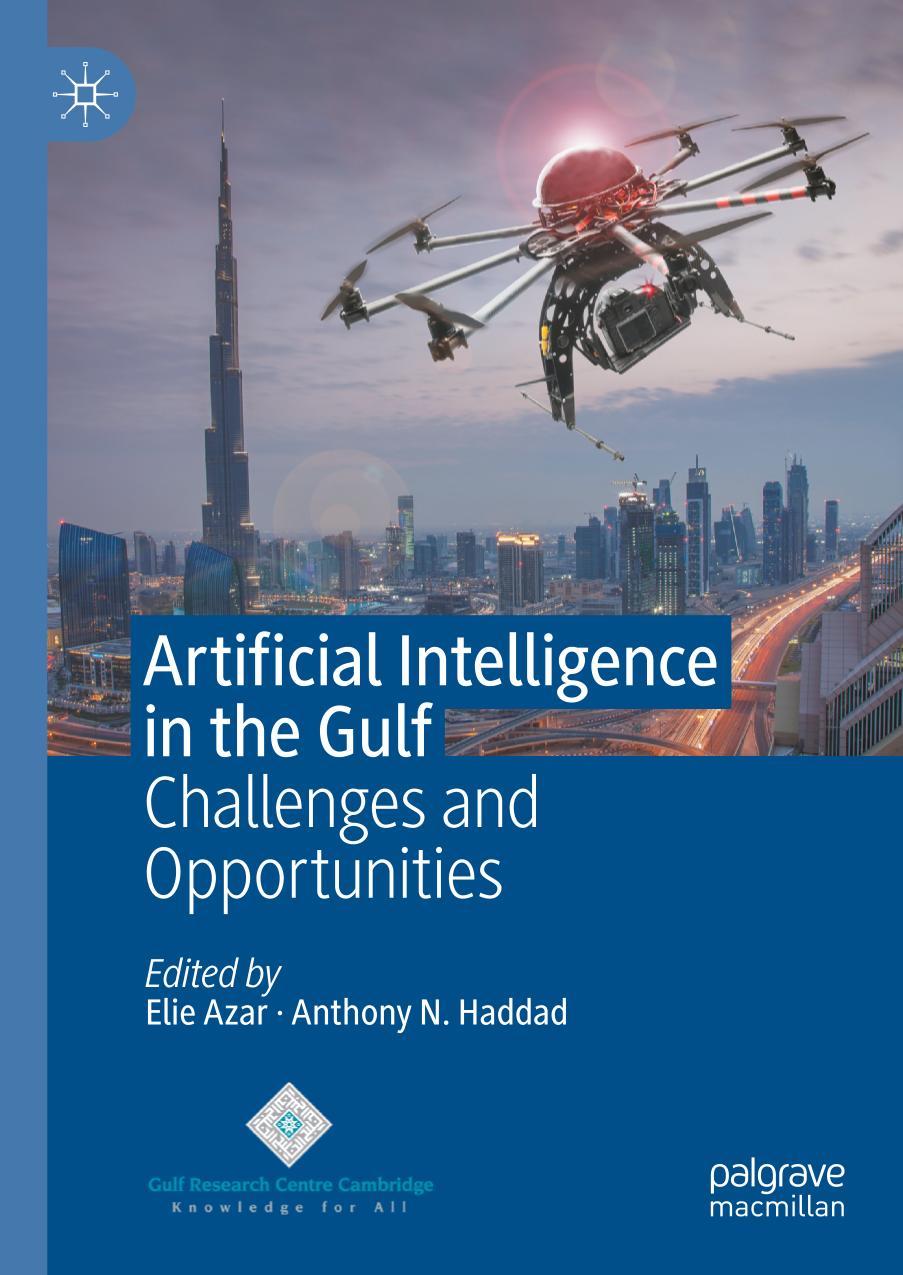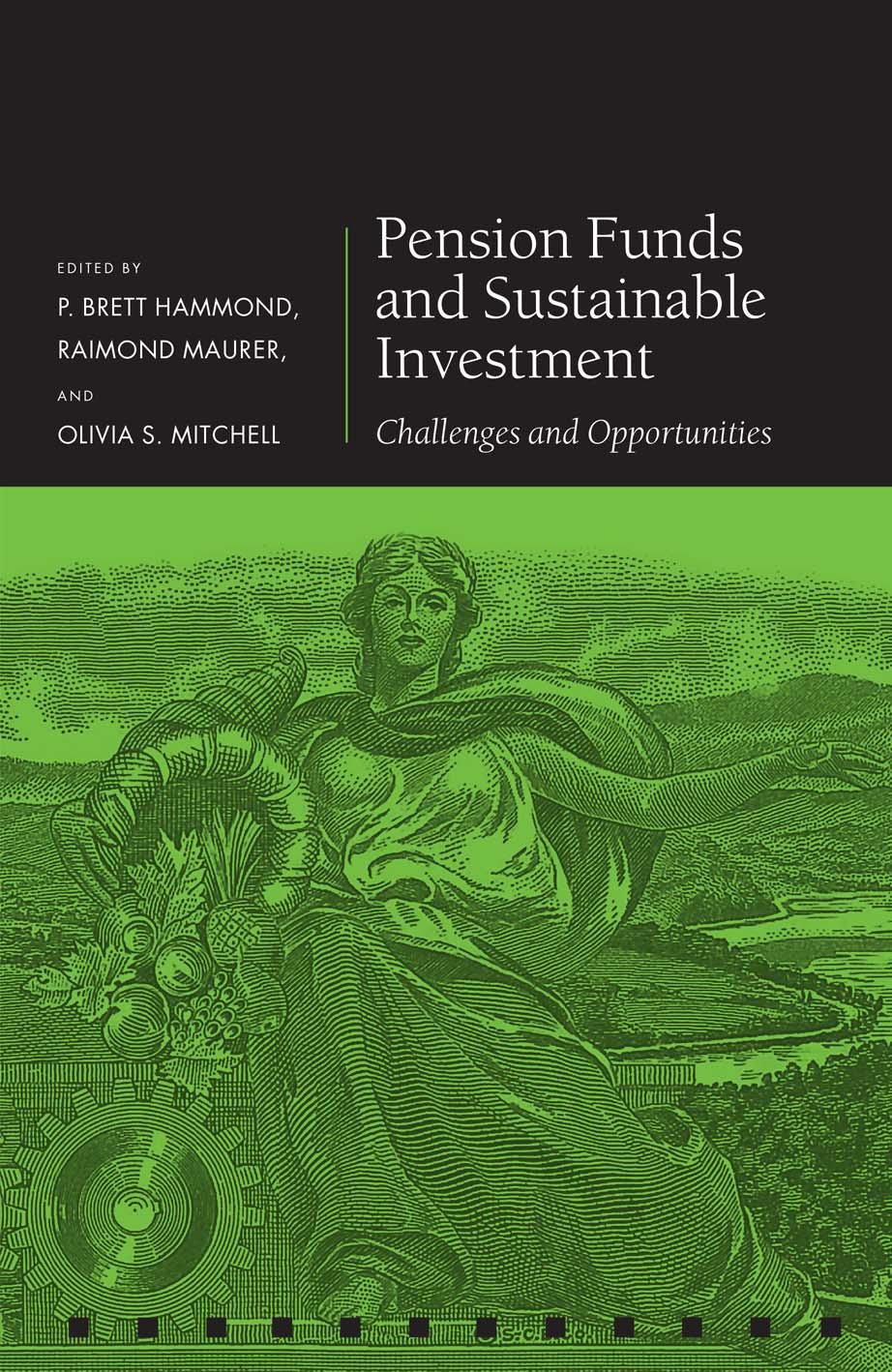PensionFunds andSustainable Investment
Editedby
P.BrettHammond RaimondMaurer and
OliviaS.Mitchell
GreatClarendonStreet,Oxford,OX26DP, UnitedKingdom
OxfordUniversityPressisadepartmentoftheUniversityofOxford. ItfurtherstheUniversity’sobjectiveofexcellenceinresearch,scholarship, andeducationbypublishingworldwide.Oxfordisaregisteredtrademarkof OxfordUniversityPressintheUKandincertainothercountries
©PensionResearchCouncil,TheWhartonSchool,TheUniversityofPennsylvania2023
Themoralrightsoftheauthorshavebeenasserted
Somerightsreserved.Nopartofthispublicationmaybereproduced,storedin aretrievalsystem,ortransmitted,inanyformorbyanymeans,forcommercialpurposes, withoutthepriorpermissioninwritingofOxfordUniversityPress,orasexpressly permittedbylaw,bylicenceorundertermsagreedwiththeappropriate reprographicsrightsorganization.
Thisisanopenaccesspublication,availableonlineanddistributedunderthetermsofa CreativeCommonsAttribution–NonCommercial–NoDerivatives4.0 Internationallicence(CCBY-NC-ND4.0),acopyofwhichisavailableat http://creativecommons.org/licenses/by-nc-nd/4.0/
Enquiriesconcerningreproductionoutsidethescopeofthislicence shouldbesenttotheRightsDepartment,OxfordUniversityPress,attheaddressabove
PublishedintheUnitedStatesofAmericabyOxfordUniversityPress 198MadisonAvenue,NewYork,NY10016,UnitedStatesofAmerica
BritishLibraryCataloguinginPublicationData
Dataavailable
LibraryofCongressControlNumber:2022948850
ISBN978–0–19–288919–5
DOI:10.1093/oso/9780192889195.001.0001
PrintedandboundintheUKby ClaysLtd,ElcografS.p.A.
Coverimage:TennesseeValleyAuthority
LinkstothirdpartywebsitesareprovidedbyOxfordingoodfaithand forinformationonly.Oxforddisclaimsanyresponsibilityforthematerials containedinanythirdpartywebsitereferencedinthiswork.
Preface
Thereisadiversityofopinionaboutwhatshouldbedoneaboutclimate change,whoshouldpaytomitigateitsworsteffects,andwhatroleinstitutionalinvestorsshouldplayintheprocess.Thisvolumeoffersviewpoints fromavarietyofcountries,stakeholders,andregulators,onhowandwhen environmental,social,andgovernance(ESG)criteriashould,andshould not,drivepensionfundinvestments.Partofthecontroversyisduetothefact thatmeasuresandmodelsofESGriskareoftenfoundedonpoorandinconsistentdata.Additionallytherearemanykindsofrisksfacingus,including transitionrisk,orthedegreetowhichacompanyispreparedforregulatory andmarketchanges;physicalrisk,ortheexposureoffactoriesandother assetstofloodsandotherclimatechangeeffects;disclosurerisk,orhow companiesdiscloseriskstowaterandotherresourcesthatarenecessaryto theirfunctionbutarenotreflectedontheirbalancesheet;liabilityrisks duetopotentiallawsuits;andhowfirmsdisclosetherisksoflaborstrifeand customerorsupplychaindisruption.
Inwhatfollows,weofferresearchontheseandrelatedmatterstobetter informinstitutionalinvestors,moneymanagers,governments,internationalorganizations,andpensionplanparticipantstoclarifywhatcanand shouldbedone.Assuch,thevolumewillbeinformativetoresearchers, plansponsors,students,andpolicymakersseekingtoenhanceretirement planofferings.
Inpreparingthisbook,manypeopleandinstitutionsplayedkeyroles. BrettHammondandRaimondMaurerwereveryhelpfulinidentifying manyoftheauthorswhoprovideduswithinvaluableinsightsinthechapters thatfollow.WeremaindeeplygratefultoourAdvisoryBoardandMembers ofthePensionResearchCouncilfortheirintellectualandresearchsupport.AdditionalsupportwasprovidedbythePensionResearchCouncil, theBoettnerCenterforPensionsandRetirementResearch,andtheRalph H.BlanchardMemorialEndowmentattheWhartonSchooloftheUniversityofPennsylvania.Wealsoarepleasedtocontinueourassociationwith OxfordUniversityPress,whichpublishesourseriesonglobalretirement security.ThemanuscriptwasexpertlypreparedbyNatalieGerichBrabson andSarahKateSanders.
OurworkatthePensionResearchCouncilandtheBoettnerCenter forPensionsandRetirementSecurityoftheWhartonSchooloftheUniversityofPennsylvaniahasfocusedonaspectsofpensionsandretirement
well-beingforalmost70years.Thisvolumecontributestoourongoing goaltogenerateusefulresearchon,andengagedebatearound,policyfor retirementsecurity.
OliviaS.Mitchell ExecutiveDirector,PensionResearchCouncil Director,BoettnerCenterforPensionsandRetirementResearch
TheWhartonSchool,UniversityofPennsylvania
1.SustainableInvestmentinRetirementFunds:Introduction 1 OliviaS.Mitchell,P.BrettHammond,andRaimondMaurer
PartI.DefiningandMeasuringSustainableObjectives andOutcomes
2.PensionsandESG:AnInstitutionalandHistoricalPerspective 17 P.BrettHammondandAmyO’Brien
3.TheOriginsofESGinPensions:StrategiesandOutcomes 58 StéphanieLachanceandJudithC.Stroehle
4.ESGInvesting:FinancialMaterialityandSocialObjectives 82 Linda-ElingLee
PartII.TheEvolutionofPensionESGInvesting
5.ESGandExpectedReturnsonEquities:TheCaseof EnvironmentalRatings 105 ChristopherC.GeczyandJohnB.GuerardJr.
6.ESGandDownsideRisks:ImplicationsforPensionFunds 137 ZachariasSautnerandLauraT.Starks
7.GlobalPensionsandESG:IsThereaBetterWay? 157 LubaNikulina
8.ElicitingPensionBeneficiaries’Sustainability Preferences:WhyandHow? 173 RobM.M.J.BauerandPaulM.A.Smeets
9.PrivateRetirementSystemsandSustainability:Insights fromAustralia,theUK,andtheUS 199
NathanFabian,MikaelHomanen,NikolajPedersen,and MorganSlebos
10.HowtheNorwegianSWFBalancesEthics,ESGRisks, andReturns
AnitaMargretheHalvorssen
NotesonContributors
RobM.M.J.Bauer isProfessorofFinanceandholderoftheElverdingChair onSustainableBusiness,Culture,andCorporateRegulationattheMaastrichtUniversitySchoolofBusinessandEconomicsinTheNetherlands. HeisalsoCo-FounderandDirectoroftheEuropeanCentreforCorporate EngagementatMaastrichtUniversityandExecutiveDirectoroftheInternationalCentreforPensionManagementinToronto.HecofoundedGRESB, arealestatesustainabilitybenchmarkingcompany,andco-chairstheGlobalResearchAllianceonSustainableFinanceandInvestment.Bauerholdsa Ph.D.fromMaastrichtUniversitySchoolofBusinessandEconomics.
NathanFabian istheChairoftheEuropeanPlatformonSustainable Finance,apublicandprivatesectorexpertpanelsetuptodevelopsustainablefinancepoliciesandtoolsinEurope,includingtheEUTaxonomy.FabianisalsoChiefResponsibleInvestmentOfficerattheUnited Nations-supportedPrinciplesforResponsibleInvestment(PRI).Previously heservedasCEOoftheInvestorGrouponClimateChangeAustralia/New Zealand;headofESGResearchatRegnan,aproviderofESGresearchand engagementservices;andCorporateGovernancePolicyAdvisorintheAustralianParliament.HeisalsoafoundingPartnerofFullCorpPartners,a financialservicesandITstart-upcompanyadvisoryfirm.Fabianearnedhis M.A.inInternationalRelationsfromtheUniversityofNewSouthWalesand hisBBusfromtheUniversityofNewcastle(Australia).HeisalsoaVincent FairfaxFellowinethicsandleadership.
ChristopherC.Geczy isAcademicDirectoroftheJacobsLevyEquityManagementCenterforQuantitativeFinancialResearchattheWhartonSchool, whereheisalsoAcademicDirectoroftheWhartonWealthManagementInitiativeatWhartonExecutiveEducation.HeearnedtheBestElectiveCourse TeachingAwardintheWhartonExecutiveMBAProgramandtheWharton TeachingExcellenceAward,andhecreatedWharton’sfirstsurveycourse insustainable/ESGinvesting.HereceivedhisB.A.ineconomicsfromthe UniversityofPennsylvaniaandhisPh.D.infinanceandeconometricsfrom theGraduateSchoolofBusinessattheUniversityofChicago.
JohnB.GuerardJr. isamemberoftheMcKinleyCapitalManagementScientificAdvisoryBoard,andheteachesasaZoomAffiliateFacultymember intheComputationalFinancialandRiskManagementProgramatthe UniversityofWashington,inSeattle.PreviouslyheservedasDirectorof
QuantitativeResearchatMcKinleyCapitalManagement,andhetaughtat theMcIntireSchoolofCommerce,theUniversityofVirginia,LehighUniversity,NewYorkUniversity,Rutgers,andtheUniversityofPennsylvania. WhileservingasDirectorofQuantitativeResearchatVantageGlobalAdvisors(formerlyMPTAssociates),hewasawardedthefirstMoskowitzPrizefor researchinsociallyresponsibleinvesting.HeearnedhisA.B.inEconomics fromDukeUniversityandPh.D.inFinancefromtheUniversityofTexas, Austin.
AnitaMargretheHalvorssen istheDirectorofGlobalLegalSolutions,LLC. Previously,sheservedasAdjunctProfessoratUniversityofDenverandLegal CounselattheNorwegianMinistryofClimateandEnvironment;shehas alsoconsultedfortheWorldHealthOrganization.Shehasresearchedand publishedontheNorwegianGovernmentPensionFundGlobal(formerly knownastheNorwegianOilFund).HalvorssenisamemberoftheInternationalLawAssociationcommitteeonInternationalLawandSeaLevelRise. SheearnedherMaster’s(LL.M.)andDoctorofTheScienceofLaw(J.S.D.) fromColumbiaUniversity,andherfirstlawdegreewasfromtheUniversity ofOslo,Norway.
P.BrettHammond isaresearchleaderattheAmericanFundsoftheCapitalGroup;heisalsoExecutiveVicePresidentoftheQGroupandmember ofthePensionResearchCouncil’sAdvisoryBoard.Previouslyhedirected researchteamsatMSCI,andheservedaschiefinvestmentstrategistatTIAACREFwhileworkingonthecreationoftarget-datefunds,inflation-linked bonds,andindividualfinancialadvice.HealsoservedontheseniormanagementteamatTheNationalAcademies,responsibleforbehavioraland socialsciencesstudies;healsotaughtatTheWhartonSchool.Hisresearch focusesoninvesting,institutionalandindividualassetallocation,pensions, highereducation,andpublicpolicy.Hereceivedhisbachelor’sdegreein economicsandpoliticalsciencefromtheUniversityofCaliforniaatSanta Cruz,andaPh.D.fromtheMassachusettsInstituteofTechnology.Heis currentlyEditor-in-Chiefofthepeer-reviewed JournalofRetirement.
MikaelHomanen isaSeniorSpecialist,ResearchatPrinciplesforResponsibleInvestment(PRI),whereheleadsthedevelopmentofinternalacademicresearchandESGdataintegrationprojects.HeisalsoanHonorary ResearchFellowattheBusinessSchool(formerlyCass)inLondon.Hewas previouslyaBradleyFellowattheUniversityofChicagoBoothSchoolof Business,avisitingscholarattheWhartonSchool,UniversityofPennsylvania,andvisitedSingaporeManagementUniversity.Hehasalsoconsulted withtheWorldBank’sDevelopmentEconomicsResearchGroup,Finance andPrivateSectorResearchteam.HereceivedhisBScandMScfrom TilburgUniversityandhisPh.D.fromCity,UniversityofLondon.
StéphanieLachance isManagingDirector,ResponsibleInvestmentatthe PublicSectorPensionInvestmentBoard(PSPInvestments)wheresheleads theResponsibleInvestmentgroup,whichplaysakeyroleintheorganization’sinvestmentstrategytoensurethatenvironmental,social,and governancefactorsareincorporatedininvestmentdecisionsandacrossall assetclasses.Herinterestsincludecorporategovernance,responsibleinvestment,securitieslaw,andregulations;priortojoiningPSPInvestments,she advisedpublicissuers,stockexchanges,andsecuritiesregulators.Sheserves ontheboardsoftheFoodBanksofQuebecandtheCanadianCoalition forGoodGovernance,andsheisamemberoftheInvestmentFundReview CommitteeoftheCorporationdeservicesduBarreauduQuébec.Sheholds aLawDegree(LL.B.)fromtheUniversitédeMontréalandisamemberof theQuebecBar;shealsoholdstheInstituteofCorporateDirectorsDirector designation.
Linda-ElingLee isGlobalHeadofResearchforMSCI’sESGResearch Group,wheresheoverseesallESG-andclimate-relatedcontentand methodology.ShehasbeennamedaTop100WomeninFinancebyBarron’s,andshewastwicevoted#1IndividualMakingtheMostPositive OverallContributiontoSustainableInvestment/CorporateGovernanceby Extel/IRRI.ShereceivedherA.B.fromHarvard,M.St.fromOxford,and Ph.D.inOrganizationalBehaviorfromHarvardUniversity.
RaimondMaurer isProfessorofInvestment,PortfolioManagement,and PensionFinanceattheFinanceDepartmentoftheGoetheUniversityFrankfurt.Hisresearchfocusesonassetmanagement,lifetimeportfoliochoice, realestate,andpensionfinance.PreviouslyhewasinresidenceattheWhartonSchoolasVisitingProfessor,andheservesasAdvisoryBoardmember ofthePensionResearchCouncil.Hisotherprofessionalactivitiesinclude servingontheUnionRealEstateInvestmentGroup,theSocietyofActuaries,andtheAssociationofCertifiedInternationalInvestmentAnalysts.He recentlycompletedaDeanshipattheFacultyofEconomicsandBusiness oftheGoetheUniversity,wherehecurrentlyservesontheFacultySenate. HishabilitationanddissertationwereawardedbyMannheimUniversity, andhealsowasawardedanhonorarydoctoratefromtheStateUniversity ofFinanceandEconomicsofSt.Petersburg.
OliviaS.Mitchell istheInternationalFoundationofEmployeeBenefit PlansProfessor,andProfessorofInsurance/RiskManagementandBusiness Economics/Policy;ExecutiveDirectorofthePensionResearchCouncil; andDirectoroftheBoettnerCenteronPensionsandRetirementResearch; allatTheWhartonSchooloftheUniversityofPennsylvania.ConcurrentlyDr.MitchellservesasaResearchAssociateattheNBER;Independent DirectorontheWellsFargoFundBoards;Co-InvestigatorfortheHealth
andRetirementStudyattheUniversityofMichigan;andExecutiveBoard MemberfortheMichiganRetirementResearchCenter.Shealsoserveson theAcademicAdvisoryCouncilfortheConsumerFinanceInstituteatthe PhiladelphiaFederalReserve;theAdvisoryCommitteeoftheHECMontrealRetirementandSavingsInstitute;andtheUNSWCentreforPensionsand Superannuation.SheearnedherB.A.inEconomicsfromHarvardUniversity,andherM.S.andPh.D.degreesinEconomicsfromtheUniversityof Wisconsin-Madison.
LubaNikulina isGlobalHeadofResearchatWillisTowersWatson,where herteamincludesmorethan100investmentprofessionalsresponsiblefor economicandcapitalmarketsresearch,evaluatingassetmanagementfirms, comingupwithinvestmentrecommendations,andcreatingnewinvestment solutions.Previously,sheledtheprivatemarketsteamandthenthemanagerresearchteamatWTW.Nikulinaisanon-executivedirectorofthe InvestorForum,anot-for-profitorganizationseekingtopositionstewardshipattheheartofinvestmentdecision-making.SheholdsanMBAdegree fromLondonBusinessSchool,aM.S.inFinancefromtheFinanceAcademy inRussia,andaB.A.inLinguisticsfromtheLinguisticUniversityinBelarus. ShehasalsocompletedtheFinancialTimesNon-ExecutiveDirectorProgrammeandattendedtheAdvancedManagementProgramatHarvard BusinessSchool.
AmyO’Brien isGlobalHeadofResponsibleInvesting(RI)atNuveen, wheresheleadsateamresponsibleforcreatingaholisticRIvisionand unifiedframeworkacrossNuveenandTIAA,regardingthefirm’soverallRIphilosophyaswellasguidelinesforincorporatingRIdisciplinesin investmentdecisionsandnewproductdevelopment.Herinterestsinclude environmental,social,andgovernancematters,aswellasimpactinvesting initiatives.ShehasservedontheBoardsoftheSocialInvestmentForum,the InvestorResponsibilityResearchCenterInstituteforCorporateResponsibility,andtheSteeringCommitteeoftheGlobalInitiativeforSustainability Ratings.ShehasbeenidentifiedbyBarron’sasoneofthemostinfluentialpeopleinESGinvesting.SheearnedherB.S.inBiologyfromBoston CollegeandherM.S.inEnvironmentalManagementandPolicyfrom RensselaerPolytechnicInstitute.
NikolajPedersen isaSeniorResearcherintheSustainableMarketsdepartmentatPrinciplesforResponsibleInvestment(PRI).Hisresearchfocuses onretirementsystemsandresponsibleinvestmentactivities.Hepreviously heldrolesintheSignatoryRelationsteam,servicinginstitutionalinvestors mainlyinEurope,NorthAmerica,andtheMiddleEast.Heearnedhismaster’sdegreeinInternationalStudiesfromAarhusUniversityandheholds IMCandCAIAqualifications.
ZachariasSautner isProfessorofFinanceattheFrankfurtSchoolofFinance &Managementwhereheteachescorporatefinance,valuation,andcorporategovernance.HepreviouslytaughtattheUniversityofAmsterdam andwasaresearchfellowattheSaïdBusinessSchooloftheUniversityof Oxford.HisresearchisintheareaofempiricalcorporatefinanceandfocusesonESG,climatefinance,andcorporategovernance.HeearnedhisPh.D. inFinancefromtheUniversityofMannheim,andhealsostudiedatthe UniversityofYorkandtheUniversityofCooperativeEducationStuttgart.
MorganSlebos istheDirectorofSustainableMarketsattheUnitedNationssupportedPrinciplesforResponsibleInvestment(PRI),whereheleadsthe sustainablefinancialsystemprogram,aimedataddressingbarriersinmarketstructure,investmentpractice,andpolicyandregulationthatprevent financialmarketsfromfunctioningsustainably.Hehasextensiveexperienceineconomics,policyandsustainablefinance,includingpreviousroles attheInstituteandFacultyofActuaries,theAssociationofBritishInsurers andtheNewZealandTreasury.HeearnedhisM.A.inPoliticalStudiesand BCominInternationalTradefromtheUniversityofAuckland.
PaulM.A.Smeets isProfessorofPhilanthropyandSustainableFinanceat MaastrichtUniversity,whereheinvestigateswhatmotivatesindividualsto behavepro-sociallythroughdonationsandsustainableinvestments.His researchandteachingalsoinquireshowtomaximizethepositiveimpact ofphilanthropyandsustainablefinanceforenhancingwell-beinginsociety.HehasalsoadvisedtheEuropeanCommission,theDutchministry offinance,theministryofsocialaffairsandtheministryofdefense.He receivedhisPh.D.inFinance,hisM.S.inInternationalStudies,andaBSc inInternationalEconomicstudies,allfromMaastrichtUniversity.
LauraT.Starks istheCharlesE.andSarahM.SeayRegentsChairin FinanceattheMcCombsSchoolofBusiness,UniversityofTexasatAustin. HerresearchfocusesonESGissues,includingclimatefinanceandboard diversity,aswellasmoleculargeneticsandfinancialdecisions.Sheisalsoa ResearchAssociateoftheNBER,SeniorFellowofABFER,andResearch MemberoftheECGI;shealsoservesontheboardofdirectorsofthe TIAA-CREFMutualFundsandCREFRetirementAnnuities;andsheis President-ElectoftheAmericanFinanceAssociation.Previously,sheserved asPresidentoftheFinancialManagementAssociation,theSocietyofFinancialStudies,andtheWesternFinanceAssociation;andsheservedonthe InvestmentAdvisoryCommitteefortheEmployeesRetirementSystemof Texas,theBoardofGovernorsoftheInvestmentCompanyInstitute,and theGoverningCounciloftheIndependentDirectorsCouncilaswellason CouncilsfortheNorwegianGovernmentPensionFund.Sheearnedher
Ph.D.andB.A.attheUniversityofTexasatAustin,andherMBAfromthe UniversityofTexasatSanAntonio.
JudithC.Stroehle isaSeniorResearcherattheSaïdBusinessSchoolof Oxford,whereherresearchfocusesontheroleoffinance,measurement, andreportingfortheimplementationofpurposefulbusiness.Sheleadsthe OxfordRethinkingPerformanceInitiativeandco-establishedtheOxford ImpactRoundtableforsustainabilityreportingandaccounting.Previously, sheworkedasaninternationalbusinessdeveloperintheGermanonline start-upsceneandasadatastrategyanalystandconsultantforinternationalchannelmarketing.Shefrequentlyworkswithnon-profits,companies, andassetmanagersontheirnon-financialstrategies,reporting,andmeasurementpractices.SheearnedherPh.D.EuropaeusinEconomicsand SociologyattheUniversityofMilanincollaborationwiththeInternational LabourOffice,andherB.A.andM.A.fromtheUniversityofBamberg.
SustainableInvestmentinRetirementFunds
Introduction
OliviaS.Mitchell,P.BrettHammond,andRaimondMaurer Sinceitsgreenshootsfirstemergedaround50yearsago,acceptanceof environmental,social,andgovernance(ESG)considerationsininstitutionalinvesting—especiallyinpensionfunds—hasevolvedwithdistinctshiftsin investorpreferences.ThisPensionResearchCouncilvolumetracesthese shiftsandtheirimplications,leadinguptothepresentday.Ourvolume notesthatinvestorshavediversereasonsfordevotingattentiontoESGcriteriawhendecidingwheretoinvesttheirmoney.Somehavehadreligious motives,suchasQuakerswhofocusonvalues;thisapproachcanoffersome riskmitigation.Yetmodelsthatlookatwhetherdivestmentactuallychanges behaviorsofcompaniesshowthatthatrarelyoccurs.So,itisnotalways screeninganddivestmentthatbringaboutthechangesthatinvestorsseek. Accordingly,thisbookoffersaselectionofdistinctviewpointsfromavariety ofcountries,onwhether,how,andwhenESGcriteriashould,andshould not,drivepensionfundinvestments.
TheLongView
EconomiststendtoagreethatESGconcernsmaylogicallyarisewherethere aremarketfailures,oftenoftheexternalitiestype.Suchexternalitiesgenerallyarisebecauseafirmwillimposecostsorbenefitsonthirdpartieson individualsorsociety,otherthantheconsumerorproducer,andthese occurwhentheexternalitiesarenotproperlypriced.Forinstance,anoil refineryproducingpollutionthatpoisonsthelocalpopulationorthesurroundingcountrysidecreatesagapbetweenthepricethatconsumerspay fortherefinedoil,andthegainorlosstothoseinjuredbythepollution. Economicsofferstwogeneraltypesofsolutionsforsuchproblems:either thegovernmentcanalterthecostsandbenefitsofsuchproduction,orthe governmentcanchangethefiduciaryrulesunderwhichtheproduceroperates.Inthecaseofpensioninvestments,whileapensionfundmightwish
OliviaS.Mitchell,P.BrettHammond,andRaimondMaurer, SustainableInvestmentinRetirementFunds.In: PensionFunds andSustainableInvestment.EditedbyP.BrettHammond,RaimondMaurer,andOliviaS.Mitchell,OxfordUniversityPress. ©OliviaS.Mitchell,P.BrettHammond,andRaimondMaurer(2023).DOI:10.1093/oso/9780192889195.003.0001
toinvestinfossilfuelfirms,itmightnotwishtoimposethesociallosseson society.Itisthistensionthatoftendrivesdebateovertheprosandconsof ESGinvestment.
In Chapter2,P.BrettHammondandAmyO’Brien(2023)pointout thatESGprincipleshavebeenshapedbynumeroussocialmovements,governments,andregulators,independentadvocacyandserviceorganizations, andassetownersandassetmanagers,notablypensionfunds.Theirwork outlinestheoriginsofESGtothepre-modernera,fromthepost-Industrial Revolutionlatenineteenthcenturytoabout1970.ThatperiodwascharacterizedbyconcentratedownershipofpubliccompaniesintheUSand elsewhere,thetransformationofworkandconsumption,andlittletono activismbysmallshareholdersorpensionfundsonsocialorenvironmental issues.
Governanceconcerns,however,wereprominentinthepre-modernera. Theyincludedpoliciestolimitmonopoliesandownershipofcompanies bybanksandfamilies,antitrustregulation,theemergenceofuniform accounting,reporting,anddisclosurerules,andtheadventofatwo-tiered boardstructurewheresupervisoryboardsretaincontrolandmanagement boardsexecutecompanystrategies.Otherfeaturesofthepre-modernera includedregulationofworkingconditionsandhours,foodquality,andthe beginningsofanenvironmentalmovement.
ThemoderneraforESGbeganaround1970,yetgovernancepolicies andpracticesvariedacrosscountries,asdidsocialandenvironmentalconcerns,notetheauthors.Forinstance,intheUS,companymanagementwas dominant,whereasfamilyand/orbankcontrolpersistedinsomeEuropean countries,andcross-holdingsandbankinfluencewerecommoninJapan. Onsocialissues,theUSandtheUKsawdebatesoveremploymentpracticesandthedeclininginfluenceofunions.TheUSwasaheadofothersin tacklingenvironmentalchallenges,withthebirthoftheUSEnvironmental ProtectionAgencycoincidingwiththedawnofESG’smodernera.
Earlyon,thedebatewasoverwhetherinstitutionalinvestorsshouldhave separateportfoliosforE,S,andG,versusasinglecommonportfolioforall three;overtime,therehasbeenagrowingrecognitionthattrueintegrationwilllikelyworkbetter.HammondandO’Brienpointtoclearevidence of‘convergence,’whichreferstoashiftinthinkingaboutenvironmental, social,andgovernanceconcernssuchthattheyarenowtreatedjointly.‘Integration’referstothenotionthatinvestorsneednotconsiderE,S,andG factorsseparatelyfromotherdecisionstheymakeregardingtheirportfolios. Forinstance,somefirmsmaycurrentlyunderperformonESGmeasures yetarelikelytogetbetterinthefuture.Inaddition,investorswithwellintegratedportfolioswillneedtobalanceandconsidermultipledimensions ofassetsatonce.Moreover,itispossiblethathigherESGreturnshavearisen incertainsectorsduetogovernmentsupportforESGinvestments,asinthe
caseofgovernmentsubsidiesforsolarandwindpower.Accordingly,the regulatoryenvironmentmustbekeptverymuchinmindwhenpredicting thefutureofESGperformance.
RolesoftheUnitedNationsandUniversal Owners
NotableamongthesubstantialshiftsintheESGevolutionaryprocesswere thefirstwaveofgovernmentmandatesandgovernanceattributes,bringing anearlyfocusonenvironmentalandsocialissues,andcatalyzingactionsby theUnitedNations.In2006,theUNhelpedframethePrinciplesofResponsibleInvesting,integratingaglobalnetworkofinvestors(UNPRI).In2016, itarticulateditsSustainableDevelopmentGoals,whichcontinuetoinform muchofESGinvestmentapproaches.ThesewereinadditiontotheUN’sclimatechangeconferences,goadingsignatorycountriestoimplementlawsto combatgreenhousegasemissions.AsHammondandO’Briennote,theUN hasbeenextremelyinfluentialinthedevelopmentofESGprinciples.For instance,UNPRIadoptedthethemeofbuildingabridgebetweenfinancial riskandreal-worldoutcomesfor2021–2024.
ThesemovesadvancedawarenessofESGamongcorporationsandregulators,butimportantshiftsinESGinvestingoccurredonlyafterinstitutions withsubstantialassetpools,suchaspensionfunds,andotheruniversalownersexertedtheirinfluence.A‘universalowner’isdefinedasapensionfund oralargeinstitutionalinvestor,suchasBlackRock,whichinvestslong-term inwidelydiversifiedholdingsthroughouttheglobaleconomy.Universal ownersmustdealwith,orareincentivizedtodealwith,externalitiessuch astheenvironmentalandsocialeffectsofthecompaniesinwhichthey invest.Moreover,governancesystemscanhelpthosecompaniesaddress theirexternalities.Asof2020,USpensionfundsmanagedUS$6.2trillion oftotalassetsincorporatingESGprinciples.
Inadditiontotheriseoftheconceptofuniversalownershipoverthe lastfewdecades,driversofESGinvestingincludeeconomictransformation goingbacktotheIndustrialRevolution,theincreasedfocusonstakeholder interests,andimproveddataandanalyticsthathelpcapturetheoutcomes.
HowESGDevelopedGlobally
ESGinvestinghasdevelopeddifferentlyacrosscountriesandmuchdepends onnationalassetownershippatternsandlegalframeworks.Pensionfunds’ andotherinstitutions’interestsandapproacheshaveevolvedovertime.A briefsummaryofdevelopmentsisasfollows:
1970s: Theconceptof‘ESGasaprinciple’tookholdasinvestorsaligned aroundkeysocialconcernssuchasapartheidinSouthAfricaandtheVietnam
War.Aswell,pioneeringinstitutionsemergedinthisdecade,suchastheInterfaithCenteronCorporateResponsibility(ICCR),whichbrokenewground withshareholderadvocacyamongfaith-basedinstitutionstopresscompanies onESGissues.
1980s: Thisdecadesawthearticulationof‘ESGasaproduct,’withtheformationofdedicatedindustrynetworkssuchasTheForumforSustainable andResponsibleInvestment(USSIF)andincreasedemphasisoncorporate governanceandtheenvironment.
1990s: Theideaof‘responsibleinvestingasaproduct’tookshapeinthis decade,withthedevelopmentofsocialindicestotrackESGandSocially ResponsibleInvesting(SRI)funds.
2000s: Inthisdecade,‘ESGasaprocess’tookhold,withinvestorconvergence onclimateissuesandtheformationofglobalinvestornetworkssuchasthe UNPRIandtheGlobalImpactInvestingNetwork(GIIN).
2010s: Theconceptof‘ESGasanoutcome’gainedgroundasresponsible investingapproachesexpandedacrossassetclasses,andESGdataandreportingpracticessawrefinements.Theadoptionin2016oftheUN’s17Sustainable DevelopmentGoalswasanotherkeycatalyst.InDecemberof2019,theEuropeanCommissionadoptedaseriesofpolicymeasures(calledthe‘greendeal’) inanefforttostipulateagreen(climateneutral)transitionoftheEuropean economyby2050.Thesemeasuresincludedvariousregulatoryinterventions imposedonthefinancialsector,aimingtoreallocatecapitalfrom‘dirty’to ‘green’activities.Thecoreoftheregulatoryinterventionsistransparency, soinvestorscanmorereadilyidentifygreenfinancialinstruments.Following SteuerandTröger(2021),theycanbecategorizedinto(1) disclosurerequirements forrawdataonclimateimpact(e.g.carbonemissions)byissuersofdebt andequityinstruments,and(2)unified greenqualitylabels (taxonomies)of large-assetportfoliosmanagedbyinstitutionalinvestors(suchasmutualfunds, insurancecompanies,pensionfunds)onbehalfofthirdparties.
2020s: Thisdecadesawtheevolutionof‘ESGasasystem,’withmanyinstitutionalinvestorsgoing‘allESG.’Thisgrewoutofanincreasedsenseof urgencyworldwideonclimateissues.Companiesthatindulgedin‘greenwashing’orfakingenvironmentalfriendlinessintheirproductsalsobeganreceiving increasedscrutiny.
Intheprocess,countrieswhereinstitutionalownerssuchaspensionshave playedadominantroleincludetheUS,theUK,Canada,andtheNetherlands.AclosesecondintermsofinfluenceonESGinvestingarethosewith relativelylessinstitutionalownership,suchasFrance,Germany,Japan,and Sweden.Thatinfluencehasbeenlessincountrieswherethepublicsector isthedominantassetowner,suchasChinaandHongKong.InstitutionalownershipisalsorelativelylighterinMalaysia,Russia,andSaudiArabia. Acombinationofprivatecorporationsandstrategicindividualsdominates assetownershipinothernationsincludingArgentina,Brazil,Chile,India, Indonesia,Pakistan,andTurkey.Privateownershipisparticularlystrongin Mexico.
ESGtoWhatEnd?
Amidstthetrendtowardconvergenceandintegration,afundamental debatehascenteredonthequestionof‘ESGtowhatend?’Somearguethat itenhancesinvestmentperformance;othersthatitaddsalphapotential; andstillothersarguethatitcanmitigateportfoliorisk.Infact,thisongoing debateishelpingtoclarifywhogetstodecideaboutESGinvesting,particularlywhenitcomestoESGperformanceandtheroleoftheregulatory regimes.Inthecaseofpensionfunds,ESGhasbeenviewedthroughthe businesscaselens,evenwhenitismoredifficulttomakeabusinesscase forit.Asaresult,someinstitutionalinvestorshavestruggledtofindthe properbalancebetweensocialresponsibilityandthefiduciarydutytoactto maximizereturnonbehalfoftheirparticipants(Tapiria2021).
Moreover,institutionalinvestorssuchaspensionfundsfacethecentral questionof‘valuesversusvalue’invirtuallyeveryinvestmentdecisionthey make.Thatisbecausetheyhaveafiduciaryresponsibilitytoprotectthe financialinterestsoftheirmembers,whodependonthemtosecuretheir retirementnesteggs.Therefore,allinvestmentdecisionsmustclearthe testoffinancialprudence,includingenvironmentalandsocialfactors,in guidingthosedecisions.
Recentpivotalmovesbysomeoftheworld’slargestpensionfundsto advancethecaseofESGinvestingarediscussedin Chapter3 byStéphanie LachanceandJudithStroehle(2023).Forinstance,inMarch2020,the CaliforniaStateTeachers’RetirementSystem(CalSTRS),theJapaneseGovernmentPensionInvestmentFund(GPIF),andthelargestUKpension fund—theUniversitiesSuperannuationScheme(USS)—publiclypledged thattheywouldintegrateESGfactorsintotheirinvestmentdecisions. Sixmonthslater,asimilarpledgewasmadebytheCEOsoftheeightlargest Canadianpensionfunds—theso-called‘Maple8.’Arelatedmovecamein Decemberof2020fromtheNewYorkStateCommonRetirementFund, whenitset2040asitsgoaltotransitionitsportfoliotonetzerogreenhouse gasemissions.
ArelatedpointregardinghowtomeasuretheinputsandimpactsofESG istakenupin Chapter4 byLinda-Eling Lee’s(2023) research.Unfortunately,thereremainsawidespreadlackofunderstandingabout,andconfidence in,howESGconceptsaremeasured,whensuchconceptsarematerial,and howtoworkwithESGdataintheinvestmentprocesswhentheavailabledata areverydifferentfromtraditionalfinancialdata.Inthepensioncontext, Leenotesthatdataqualityissuesremainachallenge,alongwithproblems thatarisewhencomparingratingsandcapturingdifferentESGobjectives. Nevertheless,asmoreinvestorsexaminethetrackrecordsandasthetrack recordscapturemorefunds,investorswillbecomebetterabletoanalyze whatisandisnotperformingwell.Nevertheless,thereremainsconcern
aboutwhytheESGdataoftendisagree,andwhyratingsdiffersomuch,one fromtheother.Therehasalsobeenasea-changeinhowthedataareused, rotatingawayfromarelianceonthird-partyratings,towardfirmsreaching outforrawdataandbuildingtheirownmodelsandassumptions.Moreover,LeearguesthatESGinvestmentsarelikelytooutperforminallsorts ofmarketcyclesandenvironmentsduetotheirlong-termhorizons.Shealso pointsoutthat,analytically,itispossibletoconductattributionanalysison ESGfunds.
Makingthisamorecomplextaskisrecentworkby Bergetal.(2019), whocautionthattheaveragecorrelationofscoresfromdifferentESG ratersvariesfrom40percentto70percent;thiscancreatecomplications inconstructingaportfolio.Thisongoingresearchseekstoquantifythe noiseandcleanitupbyunderweightingthe‘noisier’ratingsagenciesand overweightingtheagencieswithlessnoise.
FindingaBalance
Drawingonexistingliterature,severalinterviews,andanin-depthstudyof PSPInvestment,LachanceandStroehledemonstratetheroleofhistorical,organizational,andcontextualfactors,andidentifyfivepensionfund characteristicsthathaveanimportantimpactonthefunds’abilitytointegrateESG.Theseincludethehistoricaloriginsoffundsandtheextent ofembeddedregulatoryauthority;theirmandateandlegalstructure;the importanceofcorporategovernanceandleadershipatthefunds;their investmentstrategiesandassetmix;andthefunds’abilitytoengagein collaborativeandadvocacyactivities.
Inaddition,pensionfundsmustfollownationalregulationguidingthe mandatesandlegalstructurescoveringretirementplans.Inparticular, thesemandatesandlegalstructuresformthebasisforthecorporategovernancestandardsadvocatedbypensionfunds,aswellasthefreedomto decidewhetherandhowtoimplementenvironmental,social,andgovernanceconsiderations.Pensionfundsthereforedeterminetheirinvestment strategiesandassetmixesthatcanincludeESGprinciplesthroughengagementandstewardship.Collaborationandadvocacyarethetoolstheyuse,by takingpublicstandsaroundenvironmentalandsocialissues,andbyworkingwithotherfunds,asincollaborativeengagementssuchastheClimate Action100+.Launchedin2017,ClimateAction100+ isnowbackedbymore than545investorswithoverUS$52trillioninassetsundermanagement, including145NorthAmericaninvestors.
TherearealsofactorsenablingandinhibitingESGinvestmentsinpensions,reflectingthepracticalandreal-lifechallengesthatpensionfunds face.Forinstance,theESGclimateintheUKandCanadahasbeenjudged
asmorefavorablethanintheUS,particularlybecausetheEmployeeRetirementIncomeSecurityAct(ERISA)requirespensionfiduciariestoactin theparticipants’bestinterests.Nevertheless,andparticularlyinEurope, ‘success’intheESGarenahasrecentlyexpandedtoengagingwithcompanies,ratherthansimplybuyingandsellingcompanieswithgoodESGtrack records.Asaresult,thereiscurrentlyfarmoreongoingactivismintheEU, whereinvestorsarefocusedonchangingoutcomesbeyondthefinancial ones.
AdditionalchallengestoESGinvestmentsincludedifferencesofopinion andlackofinformationinprocessesandmethodsnottraditionallyreported underGenerallyAcceptedAccountingPrinciples(GAAP).Undertraditionalmoral,ethical,orotherscreeningbases,investorssearchingforutility wouldtendtosellinvestmentsthatdonotmeettheircriteria.Butoncethey eliminateanasset,theymustreplaceitwithanother.In Chapter5,Chris GeczyandJohnGuerard(2023)notethatthisiscomplicatedintheUSby theneedtosatisfyfiduciaryresponsibilitiesdespitealackofclearandconsistentguidancefromtheUSDepartmentofLaborandotherregulatory authorities.
Theauthorsexaminevariousmethodologies,attitudes,andunderstandingsaboutwhatESGisandwhenitcouldenhancepensioninvestment performance.Theirempiricalanalysisshowsthatfirmswithhighenvironmentalscoresdoprovideexcessreturnsoverthosewithlowscores unconditionally,butalsoconditionalonexpectedreturnfromadditional modelsincludingavarietyoffactorcontrols.Accordingly,theyconclude thatpensiontrustees,consultants,andmoneymanagersshouldcombine informationfrombothexpectedreturnmodelsandESGcriteriaasthese couldenhancetheirequityportfolioconstructionefforts.Alternatively,if fiduciariesfocusonriskandreturnconsiderationsalonewhenselecting investments,theauthorssuggestthatincorporatingnon-GAAPinformation viaearnings,pricemomentum,andESGcharacteristics,alongwithacollectionofweightedvaluemeasures,maycollectivelyandindividuallyaddvalue ratherthanimposeaconstraintontheinvestmentuniverse.Nevertheless, theyhavenofirmconclusions,asyet,regardingwhetherportfoliosformed fromonlyhighscoringESGfirmsmaximizeSharperatios.
FurtheranalysisoftheimpactofESGforpensioninvestmentsin Chapter6 byZachariasSautnerandLauraStarks(2023)notesthatpension plans’longhorizonsrenderthemparticularlyvulnerabletomanylonglivedESGrisks.Theauthorswarnthatthepotentialconsequencesofbeing underfunded,especiallyinthecaseofdefined-benefitpensions,leavethe fundsparticularlyvulnerabletoESG-relateddownsiderisks.ESG-induced risksincludereputationalrisk,whenafirmhaspoorenvironmentalpractices;humancapital-relatedrisks,suchashowfirmstreattheirworkers;
litigationrisk,suchasduetopollutionorwildfires;regulatoryrisk,includinggovernment-requireddisclosures;corruptionrisk;andclimaterisk, includingphysicalrisk,technologicalrisk,andtheriskofstrandedassets, amongothers.Theirchapterunderscorestheneedtodevelopprocessestoidentify,measure,andmanagethoserisksmorecarefully,ifpensionfundsaretoremainsustainable.Theiranalysisdemonstratesthat,in manycases,investorsprefertodeployriskmanagementandengagement strategies,ratherthandivestment,toaddresstheclimateriskintheirportfolios.ArecentquantitativeanalysisofESGdivestituresbyBerkandvan Binsbergen(2022:1)similarlyconcludesthat‘sociallyconsciousinvestors shouldinvestandexercisetheirrightsofcontroltochangecorporate policy.’
Theneedtoengagewithmultiplestakeholders,alongwiththegrowing needtoexamineinvestmentimpactsandsystems-levelengagement,are alteringhowglobalpensionfundsbehave,accordingtoLuba Nikulina (2023) in Chapter7.Sheproposesthatthekeyisculture,lookingbeyond immediatereturnsandfocusingonlong-termimpactuniversalownership: bythis,shemeansthatwhenpensionparticipantsownasliceofthesystem,theymustberesponsibletothesystem.Ofcourse,thiswillrequire atransformationinthewaypensionfundsaremanaged,withstrengthenedgovernanceandsystem-widecollaboration.Moreover,Nikulinanoted thatindividualpensionfunds,particularlyofthedefined-benefitvariety, facedifferentopportunitiesandconstraints,yetasinstitutionalinvestors, theytendtohaveverylongtimehorizons.Theyareexpectedtodeliver returnsovermanydecades,andperhapsoveraninfinitehorizon.Accordingly,theirrequiredreturnsneedtoencourageengagementwithsystemic risksandchallengesbeyondspecificconsiderationsoftheirowncurrent portfolios.
Atthesametime,Nikulinacautionsthatsciencestillneedstodetermine thecostofnotinvestingoveralongerhorizon,andhowdynamics— includingachanginglegalframework—maybefactoredin.Ultimately,she concludesthatpensionfundswillbecomemoreengagedintheESGarena, butinvestmentorganizationswillfirstneedtostrengthentheirgovernance structures,doabetterjobmeasuringinputsandoutputs,andinstitute system-widecollaborationandinnovation.
HowESGIsChangingPensionGovernance, Engagement,andReporting
In Chapter8,atopicofkeeninteresttoRobBauerandPaulM.A. Smeets(2023)iswhatdrivesthesustainableinvestmentagendaand whetherbeneficiariesofpensionplansshouldhaveavoiceintheirpensionplan’sinvestmentchoices.NotingthedifferencebetweentheUS
approachtothis—leaningtowardhardlawandsometimes-conflictingDOL regulations—andtheEuropeanapproach—moredrivenbysocialnorms, theysuggestthattheanswerdependsonafund’slegalandsocietalcontexts,benchmarkingpressure,andfund-specificfactorssuchasthefund’s sizeandtheboard’scomposition.Whilebeneficiariesgenerallyarenotpart ofthedebateoversustainableinvestments,thechapterreviewstheexperiencesofalargeDutchpensionplanthatdidso,andsummarizesthelessons learned.
Inparticular,theauthorsdiscusshowthisoccurredatPensioenfonds Detailhandel(PD),theDutchdefined-benefitpensionfundforretailsector employees.Amajorityofparticipantsvotedinfavorofextendingandintensifyingthevotingandengagementprogramandapprovedthesustainable developmentgoalsproposedbytheboard.Importantly,themajoritysupportforsustainableinvestmentswasnotunderminedbythe2019COVID-19 pandemic.Additionally,BauerandSmeetsarguethatabetterunderstandingofthebeliefsandpreferencesoftheclientsoffinancialservicescanhelp bringbackconfidenceinthefinancialsectorandenhancecustomerloyalty. Whilemanyagreethatparticipantsdeserveavoiceintheirpensionfund investments,nooneyetknowswhetherasimplemajorityruleistheright approach.Moreover,givenfinancialilliteracy,manyparticipantsmaynot understandthetradeoffs,andindividualinvestorgoalsmaybemutually exclusive.Ofcourse,whentwoinvestmentshavethesamefinancialreturn, butonehaspositiveESGexternalities,theevaluationprocesscanbeeasier;evenso,however,peoplemaydisagreeonhowtocomparenonfinancial attributes.Arelatedpointisthatonemightthinkofinvestingintwodifferenttypesoftechnologies,eachofwhichwouldimproveenvironmental outcomes.Forinstance,onemightwishtoholdfossilfuelsinherportfolio whiletheotherwouldnot,inthehopesofengagingthepotentiallypollutingfirms.Ultimatelyitmightbeunclearwhetherandwhentowalkaway fromthefirsttechnology.
Acomparativestudyin Chapter9 byNathanFabian,MikaelHomanen, NikolajPedersen,andMorganSlebos(2023)focusesonpolicyframeworks andimportantstructuralvariablesrelativetoprivateretirementsystemsin Australia,theUK,andtheUS.Theauthorsbelievethatinvestmentorganizations,aseithercorporationsorcustodiansoflong-termvalue,dohave internationalandnationalsocialobligationsandcommitmentstosocial outcomes,underbothhumanrightslawsandemploymentregulations. Fororganizationswithinthesesystems,enumeratedbyOECDguidelines formultinationalenterprises,theviewisthatthereisaclearregimeor frameworkindicatingfinancialinstitutions’responsibilities.
Byanalyzingreports,interviewingexperts,andusingdatafromthe PrinciplesofResponsibleInvestment,aswellasnationalpensionandretirementauthorities,theresearchidentifiesthreekeystructuralchallengesto nationalretirementsystems.Theseincludemarketfragmentation,which
tendstounderminetheresponsibleinvestmentsupportandactivities amongretirementplans;theincreasingimportanceoffundmanagersand investmentconsultants,alongwiththeirlimitedsustainableinvestment incentives;andthegrowthandlackofasustainabilityemphasisinpersonal pensionsystems.Atpresent,theyarguethatretirementplansarelesslikelytoconsiderresponsibleinvestmentpractices,whilecommercialservice providerslackincentivestodeviatefromthe‘norm.’
Theauthorsalsosuggestthatpolicymakersshouldconsiderfund consolidationinprivatesectorretirementsystems,alongwithwhether service-providerincentivescouldbebetteralignedwithsustainabilityincentives.Forinstance,policymakerscouldboosttransparencyinthesemarkets, helpinggeneratebetter-informedpolicies,whileprovidingbeneficiaries withinformationrelevanttotheirsavingschoices.Itremainsanopenquestionastowhetherbeneficiarysustainabilityinterestsaretrulybeingmet andserviced.Forinstance,regardingthelackofESGinvestmentoptions indefined-contribution(DC)personalpensionplans,considerationofclimatechangecouldbemademandatoryinviewofevidencethatinvestments maybeaffectedbychangesinmarketpricing,regulations,technology,and customerpreferencesoverthemediumtermandoverthelifeofmostDC funds.Yetitismoredifficulttodosoifnoagentinthefinancialvaluechain isultimatelyresponsibleforthelong-terminterestsofthebeneficiaryor client.
In Chapter10,AnitaMargrethe Halvorssen(2023) addressestheissue ofESGandalternativeassetinvestinginthecontextofNorway’sSovereign WealthFund,givingasanexampletheFund’s50percentstakerecently takeninDanishenergyfirmØrsted’soffshorewindfarmintheNetherlands.AlthoughtheFundisnotinvolvedinmanagingtherealestate,she suggeststhatESGintegrationisanecessity,consideringthefrequencyof globalextremeweatherevents.ShebelievesthatESGdisclosurewilleventuallyberequiredinfinancialstatementsand,asthatoccurs,investorswill becomeincreasinglyactiveratherthanreactive.Asaresult,selectingthe rightinvestmentswillprobablybesomewhateasierthanalteringnon-ESG firms’behaviorinthefuture.
LookingAhead
WhilesomepeoplemaystillbelievethattheESGconceptremainslimitedto theoldconceptof‘sociallyresponsibleinvesting,’thisvolumeclearlyshows thatESG-relatedthinkingandinvestmenthaveevolvedtofocusonseveral newcomponents.Includedamongthesearemultiplerisks,includingtransitionrisk,orthedegreetowhichacompanyispreparedforregulatoryand marketchanges;physicalrisk,ortheexposureoffactoriesandotherassets
tofloodsandotherclimatechangeeffects;disclosurerisk,orhowcompaniesdiscloseriskstowaterandotherresourcesthatarenecessarytotheir functionbutarenotreflectedontheirbalancesheet;liabilityrisksdueto potentiallawsuits;andhowtheydisclosetherisksoflaborstrifeandcustomerorsupplychaindisruption.Someinvestmentmanagers,consultants, andpensionfundtrusteesmaybewaryofESGinvestingduetoalackofconsistentguidancefromregulatoryagencies,butinmanynations,institutional investorsareincreasinglymovingaheadinaverythoughtfulway.
ThisvolumealsodiscussesarangeofchallengesfacingtheESGmovement,particularlyinthecontextofpensionfunds.Datawithwhichinvestors canlearnaboutsuchrisksarenotyetcommonlyavailableacrossfirms,sectors,ornations.Perhapseventuallytheremaybeasingleglobalstandard, thoughstakeholderscouldstilldifferintheirviewsofitsapplicabilityand theweightsplacedoneachkeyelement.Forinstance,theSustainability AccountingStandardsBoard(SASB)criteriafocusonmateriality,whilethe GlobalReportingInitiative(GRI)takesamuchbroaderpurview.Further movementintheESGdirectionislikelytowaituntilUSpensionfiduciariesreceivemoreguidancefromtheirinvestmentadvisersandinvestment managers;inturn,thelatterwillawaitclearerguidancefromtheUSDepartmentofLaborandsettledcaselaw.IntheAustralianandNewZealandDC pensionsystems,institutionalinvestorshavedevotedincreasingattention to,andactiveengagementin,pushinganenergytransitionfromfossilfuels (Klijn2020).
Moreover,modelsofESGperformancedifferfromoneconsultantor providertoanotherand,sometimes,firmsthatadvertisethemselvesasESGfriendlyor‘carbonfree’areactuallypricedidenticallytothosethatdonot (LarckerandWatts2020).AnadditionalchallengetopensionfundscontemplatingESGassetsisthatlargeinstitutionalinvestorsmayhavedifficulty gettingintonewESGproducts.Thisisbecausetheytendnottobeable toinvestinallotmentsofunderUS$100million,whilemanyESGopportunitiesaresmall,early-stageopportunities.Relatedly,manyinstitutional investorsareoftenprohibitedfromowningoverhalfofanygivenfirm’s investment,norcantheallocationexceed10percentofthepensionfund’s assets.Somehedgefundsandprivateequityareworkingtomakethismore feasible,usingfund-to-fundmodelsdedicatedtogettingmoneytosmallermanagersandcompanies.Consultantsarealsofindingwaysforlarge institutionstoallocateassetstosmalleropportunitiesandsmallerinvestors. Nevertheless,the‘silverbullet’hasnotyetbeenfound.
Afinalconsiderationisthatthereremainscontroversyaboutwhattodo aboutclimatechange,andwhoshouldpaytomitigateitsworsteffects.The SternReport(2007:xii)ontheeconomicsofclimatechangearguedthat ‘thescientificevidencethatclimatechangeisaseriousandurgentissueis nowcompelling,’andthatthestudy,alongwithmanyothers,helpeddrive
internationaleffortstopursuethegoalofkeepingglobaltemperaturesfrom rising.Butwhilethe2021UNClimateChangeConferencebroughttogetheralmost200nations,whonegotiatedtheGlasgowClimatePact,several importantnations,includingtheUS,India,andChina,refusedtosignthe agreement.Moreover,theconflictinEasternEuropehasconfirmedthe challengeofreducingnations’relianceonfossilfuels,alongwiththecontroversyoverwhethernuclearandnaturalgasshouldbelabeledas‘green’ (Abnett2022).Consequently,thedebateremainsfarfromsettled.
Furtherresearchontheseandrelatedmattersisatoppriorityfor institutionalinvestors,moneymanagers,governments,andinternational organizationstostrivetoclarifywhatcanandshouldbedone.Inparticular,littleisknownasyetaboutthewaysinwhichpensionfundsdevelop anddocumenttheirESGpolicyandpractice,howtheydeterminetheirfiduciaryresponsibilitiesregardingESG,howtheycomplywiththeirreporting requirements,howtheyreporttheirESGpracticesandresultstostakeholders,andwhentheycanandshouldusedivestmentversusengagement, relativetoinvestmentopportunities.Muchremainstobedone.
References
Abnett,L.(2022).‘LawmakerGroupAsksEUtoWithdrawGreenInvestment LabelforGas,’ Reuters https://www.yahoo.com/now/lawmaker-group-asks-euwithdraw-111059059.html?guccounter=1&guce_referrer=aHR0cHM6Ly93d3cu YmluZy5jb20v&guce_referrer_sig=AQAAACTXejW_fMibnnDpVwu5bNOvZ19Q 7lpsIbSpclsG7RARNrEmTSHIQme2gBcGhbp4sWMH92fs2wsmFKcymboQ5qw GlYaNRlVmnJZ4sBgKETdMS_qY8c0528ov-v8RwPrZ61fSUdb-WqTGahWR59C_ gYgn_NPHNYVDkhMARhLWVN3I
Bauer,R.andP.M.A.Smeets(2023).‘ElicitingPensionBeneficiaries’Sustainability Preferences:WhyandHow?’InP.B.Hammond,R.Maurer,andO.S.Mitchell, eds., PensionFundsandSustainableInvestment:ChallengesandOpportunities.Oxford: OxfordUniversityPress,pp.173–198.
Berg,F.,J.Kolbel,andR.Rigobon.(2019).‘AggregateConfusion:TheDivergence ofESGRatings,’SSRNWorkingPaper. https://papers.ssrn.com/sol3/papers. cfm?abstract_id=3438533
Berk,J.B.andJ.H.vanBinsbergen.(2022).‘TheImpactofImpactInvesting,’Law& EconomicsCenteratGeorgeMasonUniversityScaliaLawSchoolResearchPaper Series,22-008.
Fabian,N.,M.Homanen,N.Pedersen,andM.Slebos(2023).‘PrivateRetirementSystemsandSustainability:InsightsfromAustralia,theUK,andtheUS.’ InP.B.Hammond,R.Maurer,andO.S.Mitchell,eds., PensionFundsandSustainableInvestment:ChallengesandOpportunities.Oxford:OxfordUniversityPress, pp.199–219.
Geczy,C.C.andJ.B.Guerard,Jr.(2023).‘ESGandExpectedReturnsonEquities:TheCaseofEnvironmentalRatings.’InP.B.Hammond,R.Maurer,and
O.S.Mitchell,eds., PensionFundsandSustainableInvestment:ChallengesandOpportunities.Oxford:OxfordUniversityPress,pp.105–136.
Halvorssen,A.M.(2023).‘HowtheNorwegianSWFBalancesEthics,ESGRisks,and Returns.’InP.B.Hammond,R.Maurer,andO.S.Mitchell,eds., PensionFunds andSustainableInvestment:ChallengesandOpportunities.Oxford:OxfordUniversity Press,pp.220–234.
Hammond,P.B.andA.O’Brien(2023).‘PensionsandESG:AnInstitutionaland HistoricalPerspective.’InP.B.Hammond,R.Maurer,andO.S.Mitchell,eds., PensionFundsandSustainableInvestment:ChallengesandOpportunities.Oxford: OxfordUniversityPress,pp.17–57.
Klijn,W.(2020).‘AGuidetoESGinAustralasia,’InvestmentInnovationInstitute (i3-invest.com).
Lachance,S.andJ.Stroehle(2023).‘TheOriginsofESGinPensions:Strategiesand Outcomes.’InP.B.Hammond,R.Maurer,andO.S.Mitchell,eds., PensionFunds andSustainableInvestment:ChallengesandOpportunities.Oxford:OxfordUniversity Press,pp.58–81.
Larcker,D.F.andE.Watts.(2020).‘Where’stheGreenium?’ JournalofAccountingandEconomics,69(2):np. https://www.sciencedirect.com/journal/journal-ofaccounting-and-economics/vol/69/issue/2.
Lee,L.-E.(2023).‘ESGInvesting:FinancialMaterialityandSocialObjectives.’In P.B.Hammond,R.Maurer,andO.S.Mitchell,eds., PensionFundsandSustainableInvestment:ChallengesandOpportunities.Oxford:OxfordUniversityPress, pp.82–101.
Nikulina,L.(2023).‘GlobalPensionsandESG:IsThereaBetterWay?’InP.B.Hammond,R.Maurer,andO.S.Mitchell,eds., PensionFundsandSustainableInvestment: ChallengesandOpportunities.Oxford:OxfordUniversityPress,pp.157–169.
Sautner,Z.andL.Starks(2023).‘ESGandDownsideRisks:ImplicationsforPensionFunds.’InP.B.Hammond,R.Maurer,andO.S.Mitchell,eds., PensionFunds andSustainableInvestment:ChallengesandOpportunities.Oxford:OxfordUniversity Press,pp.137–156.
Stern,N.(2007). TheEconomicsofClimateChange:TheSternReview.Cambridge: CambridgeUniversityPress.
Steuer,S.andT.H.Tröger(2021).‘TheRoleofDisclosureinGreen Finance,’SAFEWorkingPaperNo.320. https://papers.ssrn.com/sol3/papers. cfm?abstract_id=3908617.
Tapiria,H.(2021).‘TheWorldMayBeBetterOffwithoutESGInvesting,’ Stanford SocialInnovationReview,July14. https://ssir.org/articles/entry/the_world_may_ be_better_off_without_esg_investing.
